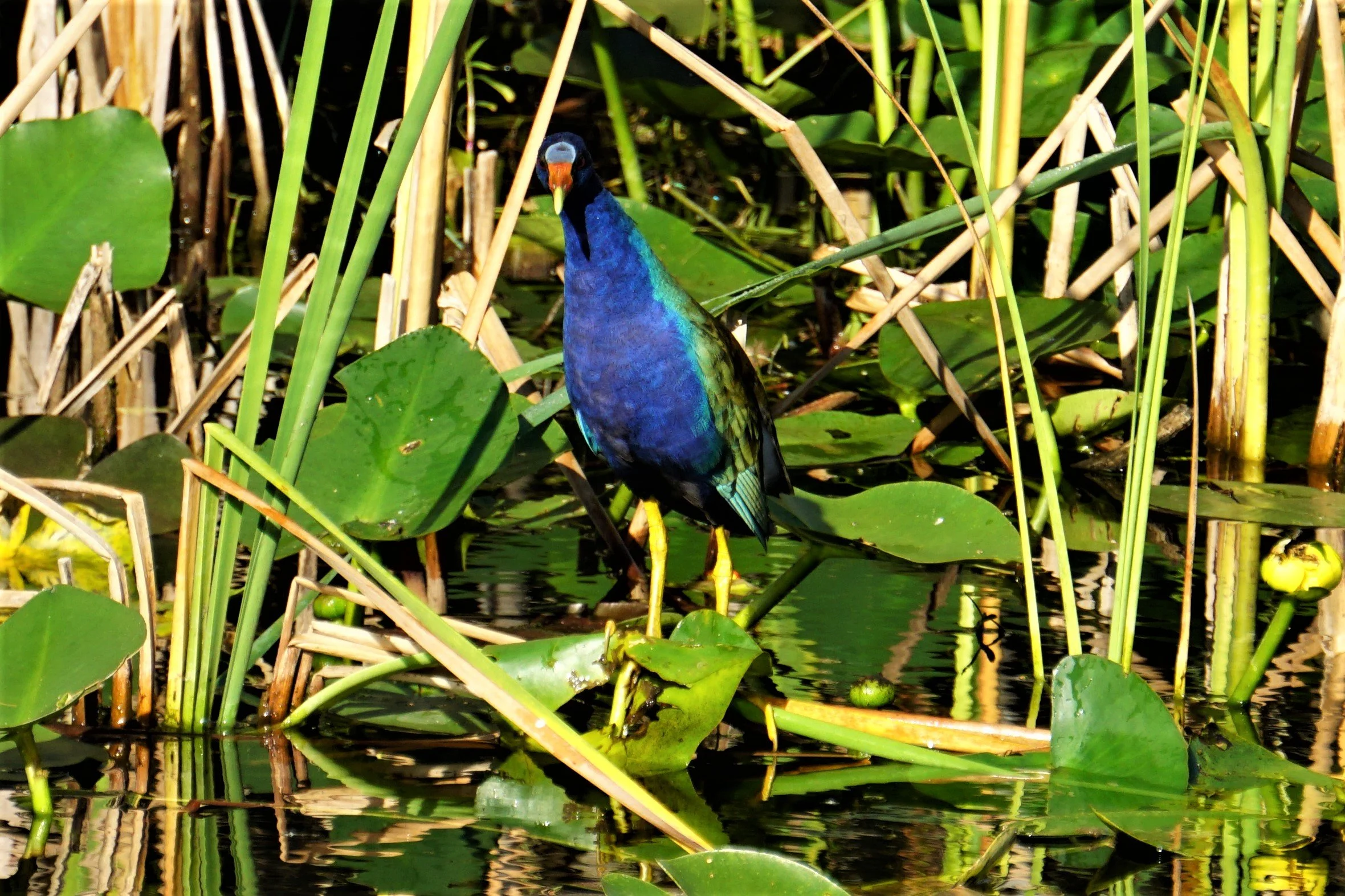Twenty-five birders joined John Hutchison and Brian Rapoza for a full day of birding at Shark Valley in Everglades National Park and various locations in Big Cypress National Preserve. Though the Shark Valley parking area doesn’t open until 8:30am, participants began assembling at the entrance gate as early as 7:30am. Limpkin and several other wading birds were seen along the entrance road while we waited. At 8:00am, we were allowed to drive as far as the fee station but had to wait until precisely 8:30am to enter the parking area.
After assembling at the visitor center, we began our exploration of Shark Valley on the 0.2-mile Bobcat Boardwalk, crossing from the east side over to the west side of the 15-mile tram/bike road. The boardwalk was very quiet, but the canal along the west side of the tram road was much more productive. A number of alligators, including babies, were seen during our half-mile walk to the Otter Cave trail, which we discovered was closed due to high water.
Waterbirds seen during the walk included Purple Gallinule, Killdeer, Lesser Yellowlegs, Wood Stork, Anhinga, Double-crested Cormorant, Great Blue, Little Blue, Tricolored and Green Heron, Great and Snowy Egret, Black-crowned Night-Heron, White and Glossy Ibis and Roseate Spoonbill. Several birds of prey were also present, including Black and Turkey Vulture, Osprey, Red-shouldered Hawk and a light-morph Short-tailed Hawk. Songbirds seen or heard included residents such as White-eyed Vireo, American Crow, Carolina Wren, Common Yellowthroat and Northern Cardinal, as well as winter visitors including Eastern Phoebe, Tree Swallow, Gray Catbird, Northern Waterthrush and Orange-crowned Palm, Yellow-rumped and Prairie Warbler.
The group then drove west on Tamiami Trail into Big Cypress National Preserve; our first stop was at the Oasis Visitor Center, where we saw several more alligators, many other visitors but only a few birds. We continued west to Kirby Storter Roadside Park, where we had lunch, then explored the half-mile boardwalk that leads into a beautiful cypress dome. Eastern Bluebirds are sometimes found there, but in spite of our best efforts, we failed to find any. Birds we did encounter included Yellow-bellied Sapsucker, Piliated Woodpecker, Northern Flicker (heard), Tufted Titmouse, Louisiana and Northern Waterthrush, Northern Parula and Black-and-white, Pine and Yellow-throated Warbler.
Returning east on Tamiami Trail, we turned south at Monroe Station onto unpaved Loop Road. Our intention was to explore the entire road, but we quickly discovered that the road hadn’t been graded in some time and was severely potholed. Not wanting to damage our cars, we decided to turn around and return to Tamiami Trail. We continued east until we reached the other end of Loop Road at Fortymile Bend. This end of the road is paved for the first eight miles, so we drove as far as Mitchell’s Landing Campground, but saw or heard very little along the way, so we decided to call it a day.
A total of 57 species were tallied during the day; all are listed in an eBird trip report which can be viewed here.
Purple Gallinule: Photo by Brian Rapoza

